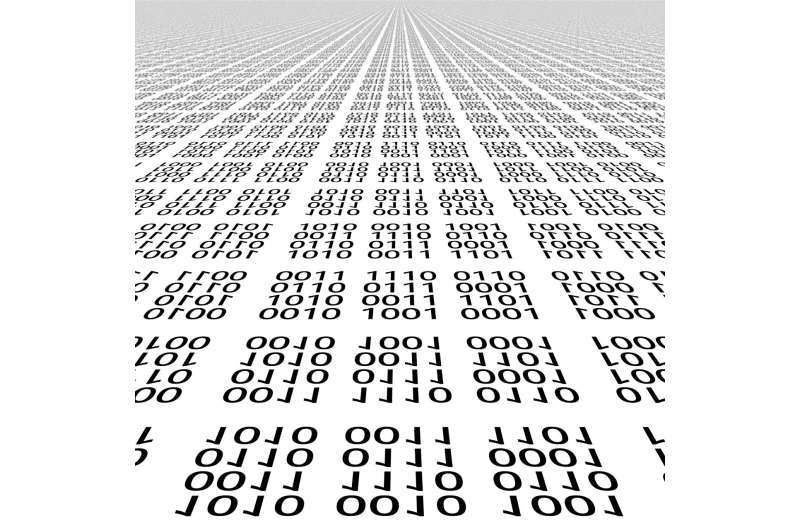
Researchers from North Carolina State University and Johns Hopkins University have demonstrated a technology capable of a suite of data storage and computing functions—repeatedly storing, retrieving, computing, erasing or rewriting data—that uses DNA rather than conventional electronics. Previous DNA data storage and computing technologies could complete some but not all of these tasks.
The paper, titled “A Primordial DNA Store and Compute Engine,” appears in the journal Nature Nanotechnology.
“In conventional computing technologies, we take for granted that the ways data are stored and the way data are processed are compatible with each other,” says project leader Albert Keung, co-corresponding author of a paper on the work.
“But in reality, data storage and data processing are done in separate parts of the computer, and modern computers are a network of complex technologies.” Keung is an associate professor of chemical and biomolecular engineering and a Goodnight Distinguished Scholar at NC State.
“DNA computing has been grappling with the challenge of how to store, retrieve and compute when the data is being stored in the form of nucleic acids,” Keung says.
“For electronic computing, the fact that all of a device’s components are compatible is one reason those technologies are attractive. But, to date, it’s been thought that while DNA data storage may be useful for long-term data storage, it would be difficult or impossible to develop a DNA technology that encompassed the full range of operations found in traditional electronic devices: storing and moving data; the ability to read, erase, rewrite, reload or compute specific data files; and doing all of these things in programmable and repeatable ways.
“We’ve demonstrated that these DNA-based technologies are viable, because we’ve made one.”
The new technology is made possible by recent techniques that have enabled the creation of soft polymer materials that have unique morphologies.
“Specifically, we have created polymer structures that we call dendricolloids—they start at the microscale, but branch off from each other in a hierarchical way to create a network of nanoscale fibers,” says Orlin Velev, co-corresponding author and the S. Frank and Doris Culberson Distinguished Professor of Chemical and Biomolecular Engineering at NC State.
“This morphology creates a structure with a high surface area, which allows us to deposit DNA among the nanofibrils without sacrificing the data density that makes DNA attractive for data storage in the first place.”
“You could put a thousand laptops’ worth of data into DNA-based storage that’s the same size as a pencil eraser,” Keung says.
“The ability to distinguish DNA information from the nanofibers it’s stored on allows us to perform many of the same functions you can do with electronic devices,” says Kevin Lin, first author of the paper and a former Ph.D. student at NC State.
“We can copy DNA information directly from the material’s surface without harming the DNA. We can also erase targeted pieces of DNA and then rewrite to the same surface, like deleting and rewriting information stored on the hard drive. It essentially allows us to conduct the full range of DNA data storage and computing functions. In addition, we found that when we deposit DNA on the dendricolloid material, the material helps to preserve the DNA.”
“You could say that Keung’s team is providing the equivalent of microcircuits, and the dendricolloidal material that my team creates provides the circuit board,” says Velev.
“Our NC State collaborator Adriana San Miguel helped us incorporate the materials into microfluidic channels that direct the flow of nucleic acids and reagents, allowing us to move data and initiate computing commands. Winston Timp’s lab at Johns Hopkins contributed their expertise on nanopore sequencing, which helps us directly read the data in RNA after copying it from DNA on the material’s surface. And James Tuck’s lab—also here at NC State—has developed algorithms that allow us to convert data into nucleic acid sequences and vice versa while controlling for potential errors.”
The researchers have demonstrated that the new data storage and computing technology—which they call a “primordial DNA store and compute engine”—is capable of solving simple sudoku and chess problems. Testing suggests that it could store data securely for thousands of years in commercially available spaces without degrading the information-storing DNA.
“What’s more, the dendrocolloidal host material itself is relatively inexpensive and easy to fabricate,” Velev says.
“There’s a lot of excitement about molecular data storage and computation, but there have been significant questions about how practical the field may be,” says Keung. “We looked back at the history of computing and how the creation of ENIAC inspired the field. We wanted to develop something that would inspire the field of molecular computing. And we hope what we’ve done here is a step in that direction.”
The paper was co-authored by Kevin Volkel and Andrew Clark, former Ph.D. students at NC State; Cyrus Cao and Rachel Polak, Ph.D. students at NC State; Adriana San Miguel, an associate professor of chemical and biomolecular engineering at NC State; James Tuck, a professor of electrical and computer engineering at NC State; Winston Timp, an associate professor of biomedical engineering at Johns Hopkins University; and Paul Hook, a postdoctoral researcher at Johns Hopkins.
More information:
A Primordial DNA Store and Compute Engine, Nature Nanotechnology (2024). DOI: 10.1038/s41565-024-01771-6. www.nature.com/articles/s41565-024-01771-6
Citation:
For first time, DNA tech offers both data storage and computing functions (2024, August 22)
retrieved 22 August 2024
from https://phys.org/news/2024-08-dna-tech-storage-functions.html
This document is subject to copyright. Apart from any fair dealing for the purpose of private study or research, no
part may be reproduced without the written permission. The content is provided for information purposes only.

